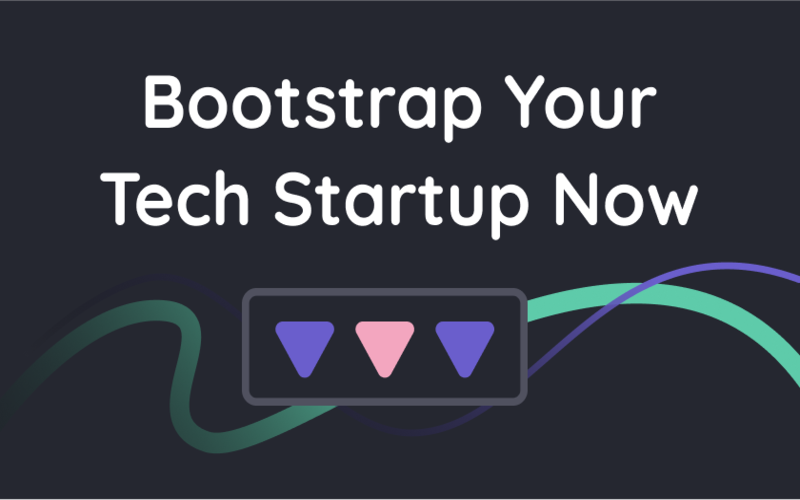Bootstrapping: Unlocking the Path to Developing a Successful Consumer Tech Product. In the ever-evolving world of startups and entrepreneurship, bootstrapping has emerged as a compelling alternative to traditional venture capital funding. As global venture funding experiences a decline, founders recognize the value and viability of building consumer tech products without relying on external investment. In this comprehensive article, we explore the concept of bootstrapping, its advantages, and the key principles behind its success, allowing you to navigate the entrepreneurial landscape and develop a consumer tech product with remarkable results.
The Rise of Bootstrapping in the Startup Ecosystem
Venture capital has long been the go-to funding avenue for startups, providing financial resources, mentorship, and network access. However, the landscape is shifting, and bootstrapping is gaining prominence due to several factors:
- Market Downturn and Revenue Focus: In an environment where venture funding may be more challenging to secure, bootstrapping allows founders to focus on generating revenue from the outset. By building products customers are willing to pay for, startups can navigate market downturns more effectively and create sustainable business models.
- Greater Independence and Control: Bootstrapping empowers founders to control their vision and decision-making processes fully. Without the pressure of external investors, entrepreneurs can prioritize long-term goals, make agile adjustments, and retain autonomy in shaping their product’s direction.
- Efficient Resource Allocation: Bootstrapped startups operate with limited resources, leading to careful and efficient allocation of funds. This disciplined approach encourages creativity, innovation, and lean operations, fostering resourcefulness and ingenuity throughout the product development journey.
Key Principles for Successful Bootstrapping
To succeed in bootstrapping a consumer tech product, founders must adopt a strategic mindset and embrace fundamental principles. Let’s explore three key principles that can pave the way for triumph:
- Double Down on a Key Focus
When bootstrapping, it is crucial to identify and double down on a key focus. By narrowing your product’s scope and defining a specific target market, you can concentrate your efforts, resources, and marketing strategies to cater to the specific needs of your customers. This focused approach allows for more efficient product development, better alignment with market demands, and increased customer satisfaction.
- Educate Customers About Product Importance
Building awareness and educating customers about the significance of your consumer tech product are vital steps in the bootstrapping journey. By effectively communicating your product’s value proposition, benefits, and unique features, you can differentiate yourself from competitors and garner customer interest. Utilize compelling storytelling, persuasive content, and engaging marketing strategies to create a connection between your product and your target audience.
- Prioritize Revenue Generation
In bootstrapping, revenue generation takes center stage. Founders must establish a revenue-focused mindset from the early stages of product development. Implement pricing strategies, create revenue streams, and explore monetization opportunities aligned with your product and target market. By prioritizing revenue generation, you can build a sustainable business model, reinvest profits into growth, and attract potential investors by showcasing the viability and profitability of your consumer tech product.
The Success Story of NordVPN: A Testament to Bootstrapping
An exemplary illustration of the potential of bootstrapping is the success story of NordVPN. Founded by a group of tech enthusiasts, NordVPN aimed to disrupt the VPN (Virtual Private Network) market by providing a secure and user-friendly solution. Through strategic bootstrapping, NordVPN achieved remarkable milestones:
- Addressing Functional and Emotional Needs: NordVPN recognized the importance of catering to its target audience’s functional and emotional needs. By offering a reliable and feature-rich VPN service combined with a seamless and intuitive user experience, NordVPN built customer loyalty and achieved high retention rates.
- Product Differentiation and Brand Identity: NordVPN strategically positioned itself as a trusted and privacy-focused VPN provider, distinguishing itself from competitors. Through effective branding, consistent messaging, and an emphasis on security and privacy, NordVPN established a strong brand identity that resonated with consumers seeking reliable and trustworthy VPN solutions.
- Agile Adaptation and Continuous Improvement: NordVPN’s bootstrapped approach allowed for agile adaptation and continuous improvement. By closely listening to customer feedback, staying ahead of technological advancements, and rapidly iterating on their product, NordVPN maintained a competitive edge and delivered a product that consistently exceeded customer expectations.
Conclusion
Bootstrapping offers a compelling pathway for entrepreneurs to develop successful consumer tech products without external venture capital funding. By focusing on revenue generation, maintaining a key product focus, and educating customers about the product’s importance, founders can unlock the potential for sustainable growth and market dominance. The success story of NordVPN exemplifies the transformative impact of bootstrapping, emphasizing the value of understanding customer needs, building brand identity, and adapting agilely.

















































